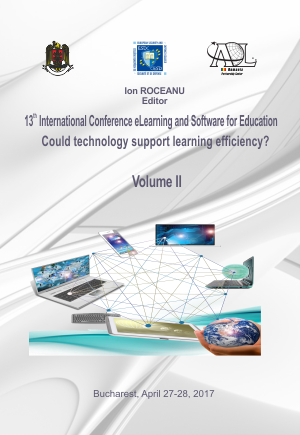DESIGN AND IMPLEMENTATION OF AN ONLINE LEARNING APPLICATION TO STUDY A VIRTUAL E-BANKING SYSTEM
DESIGN AND IMPLEMENTATION OF AN ONLINE LEARNING APPLICATION TO STUDY A VIRTUAL E-BANKING SYSTEM
Author(s): Valentin PUPEZESCU, Radu Rădescu, Sever PAŞCASubject(s): Social Sciences
Published by: Carol I National Defence University Publishing House
Keywords: Learning system; Emerging technologies; Knowledge management; E-banking; Virtual learning; Data transmission protocols.
Summary/Abstract: This paper presents a case study of designing and using an Internet Banking Web application. Its goal is the online learning of administration and deployment of a virtual e-banking system. The application is developed using a three-tier architecture using Apache, PHP and MySQL. The application has all the functionalities of an actual e-banking real-life system. In addition, the paper focuses on highlighting the security problems that may occur and proposes solutions for them. For app implementation the WAMP (Windows, Apache, MySQL and PHP) system was used. Apache is an open source HTTP Server having the following main features: it allows server side programming, virtual hosting and especially the fact that it can be dynamically added modules to extend its functionality (feature that are seized in the paper). MySQL was chosen because it is the best known and widespread database management system. PHP was chosen because of its main advantages: simplicity, efficiency and flexibility. The application was developed using object-oriented programming. This application is the foundation for creating e-learning content to study the management systems of virtual banking. The application was implemented as an independent module into the online e-learning platform called Easy-Learning (an original product of the Department of Applied Electronics and Information Engineering from the University Politehnica of Bucharest). After testing the app, students suggested some improvements, such as real-time validation of user input or centralization of accounts statement, which was taken into account in completing the application. Two MySQL databases are used in this application: the database that stores all user information and account information, and the internal database for token used for authentication. Normally, each token ought to have its own database, but for simplicity a common database for all tokens was used. The implementation solution is that of a virtual event-based token and not time-based token, due to its advantages: server synchronization using an incremental counter, incrementing the counter is not performed without user’s intervention, there is no need for server timing synchronization, well-known cryptographic algorithms are used, and it does not require entering a PIN code for activation (as in the case of hardware token). The administrator has a specific menu, more complex compared to users’ menu. The administrator has additional rights, such as viewing, adding and deleting users, creating their accounts, and the ability to create a backup of the database tables and their restoration. The administrator is the only one that can add or delete users; there is no ability for users to register themselves in order to use the e-banking services. The administrator has access to the user menu, but not vice versa. From the administrator's point of view, analyzing user activity is easily performed using the menu of viewing the user operations history. This way, the administrator can oversee if a user has completed the system requirements or has experienced difficulties in carrying out banking operations. Also, the administrator can modify the user accounts balance when it is needed and can unlock user accounts experiencing authentication problems. From the user point of view, the application offers the following available financial operations: viewing accounts, opening or liquidation of deposits, paying bills or transfers between accounts, and foreign exchange. Currency exchange is updated following the rating of the National Bank of Romania, and this is a strong point of application. The web application allows users to access virtual Internet Banking accounts similar to real-life bank accounts and to accomplish financial transactions in a secure environment. There are multiple security filters, as well as financial operations that customers can achieve online. To improve user experience, a real-time validation of user input data is performed in order to inform the users when placing data in a non-specific format. Another advantage of the app is that all the IT tools and technologies used are freeware software. Overall, a free, interactive application is obtained, where the users can learn and practice in a virtual environment banking operations and procedures, and the administrator has all the necessary means to supervise and manage the whole process of learning and practical application of knowledge acquired.
Journal: Conference proceedings of »eLearning and Software for Education« (eLSE)
- Issue Year: 13/2017
- Issue No: 02
- Page Range: 150-157
- Page Count: 8
- Language: English

